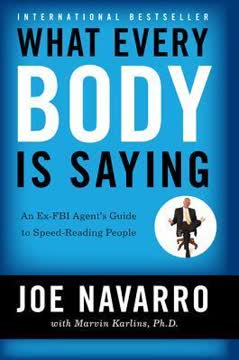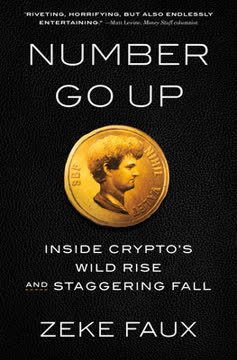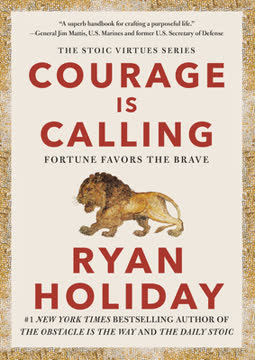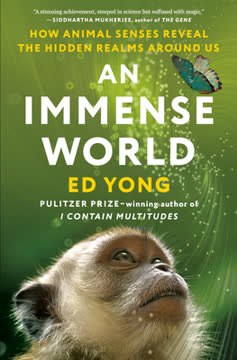Key Takeaways
1. Science is a systematic search for falsifiable models of Nature
Scientists cannot prove things to be true. Indeed, scientists spend much of their time proving things—their models, mostly—false.
Science seeks understanding, not Truth. Science is a process of inquiring about Nature through systematic observation, measurement, and experimentation. It aims to construct falsifiable models that explain natural phenomena and make testable predictions. These models are always tentative and subject to revision or rejection based on new evidence.
Unlike mathematics or philosophy, science cannot prove absolute truths about the universe. Instead, it progressively builds more accurate and comprehensive models by disproving incorrect ideas. This approach has led to remarkable advances in our understanding of the world, from subatomic particles to the cosmos.
Key aspects of the scientific method:
- Empirical observation and data collection
- Formation of hypotheses and testable predictions
- Controlled experiments and rigorous analysis
- Peer review and replication of results
- Continuous refinement of theories based on evidence
2. Cultivate scientific habits of mind to navigate the Misinformation Age
We live in a world dominated by science and its product: technology. This world faces daunting challenges—from energy supplies to food supplies, from biodiversity collapse to the freshwater crisis, and, at the root of many of these issues, global climate change.
Scientific thinking is essential for survival. In an era of information overload and widespread misinformation, developing scientific habits of mind is crucial for making informed decisions and understanding complex issues. These habits include skepticism, critical thinking, quantitative reasoning, and the ability to evaluate evidence objectively.
Key scientific habits of mind:
- Skepticism: Question claims and demand evidence
- Quantitative reasoning: Use numbers and data to understand problems
- Empiricism: Rely on observation and experimentation, not authority or intuition
- Logical thinking: Analyze arguments for fallacies and sound reasoning
- Open-mindedness: Be willing to change views based on new evidence
By cultivating these habits, individuals can better navigate the challenges of the modern world, from personal health decisions to global issues like climate change and resource management.
3. Understand scales and use back-of-the-envelope calculations
As with any question you can dream up, that you can find an answer on the Web, but how will you know if the number you find there is valid?
Estimation empowers independent thinking. Understanding scales and being able to perform quick, approximate calculations is a powerful tool for evaluating claims and making sense of the world. This skill, often called "back-of-the-envelope" calculation, allows you to critically assess information without relying solely on external sources.
Steps for back-of-the-envelope calculations:
- Define the problem clearly
- Identify relevant information and make reasonable assumptions
- Break down complex problems into simpler parts
- Use round numbers and scientific notation for easier mental math
- Check your answer for plausibility and correct units
Practice examples:
- Estimating the number of piano tuners in a city
- Calculating the energy content of gasoline
- Determining the impact of a policy change on a population
By developing this skill, you can quickly evaluate the plausibility of claims, gain insights into complex systems, and make more informed decisions in various aspects of life.
4. Graphs and data visualization reveal patterns and insights
A graph is often worth more than a thousand words.
Visual representation enhances understanding. Graphs and other forms of data visualization are powerful tools for revealing patterns, trends, and relationships in complex datasets. They leverage our brain's ability to process visual information quickly and efficiently, allowing us to gain insights that might be obscured in raw numbers or text.
Key types of graphs and their uses:
- Line graphs: Show trends over time or continuous relationships
- Scatter plots: Reveal correlations between two variables
- Bar charts: Compare quantities across categories
- Histograms: Display the distribution of a dataset
- Box plots: Summarize the spread and central tendency of data
When interpreting graphs:
- Read axis labels and units carefully
- Consider the scale and any distortions it might create
- Look for overall trends and outliers
- Be aware of potential manipulation through selective presentation
By developing graphical literacy, you can better understand and communicate complex information, detect misleading presentations of data, and draw more accurate conclusions from scientific and statistical reports.
5. Probability and statistics are essential tools for rational thinking
Probability and its sister discipline statistics have a terrible reputation that has endured for centuries. The epithet from which the title of the next chapter is derived—there are lies, damn lies, and statistics—coined by the nineteenth-century British prime minister Benjamin Disraeli, evinces a particularly robust notion: that probability and statistics are used primarily as tools for manipulation and deception.
Quantify uncertainty for better decisions. Probability and statistics provide a framework for understanding uncertainty, analyzing data, and making informed decisions in complex situations. Despite their reputation for being used to mislead, these tools are essential for rational thinking and scientific inquiry when applied correctly.
Key concepts in probability and statistics:
- Probability: The likelihood of an event occurring
- Random variables: Quantities that can take on different values
- Distributions: Patterns of how data are spread out
- Sampling: Selecting a subset to represent a larger population
- Hypothesis testing: Evaluating claims based on data
Common pitfalls to avoid:
- Confusing correlation with causation
- Neglecting sample size and selection bias
- Misinterpreting p-values and statistical significance
- Failing to consider alternative explanations
By understanding these concepts, you can better evaluate risks, interpret scientific studies, and make more rational decisions in the face of uncertainty.
6. Correlation does not imply causation: be wary of spurious connections
All of these factors are embedded in complex feedback loops with the temperature. An example of positive feedback is when the Arctic sea ice melts because of warmer temperatures. This results in more exposed ocean (which absorbs sunlight) and less ice (which reflects light efficiently), meaning more energy is absorbed, the temperature rises further, and more ice melts.
Causality requires careful investigation. While correlations can suggest relationships between variables, they do not prove causation. Many factors can create apparent connections that are misleading or coincidental. Understanding this principle is crucial for interpreting scientific studies, evaluating claims in the media, and making sound decisions.
Types of relationships to consider:
- Direct causation: A directly causes B
- Reverse causation: B actually causes A
- Common cause: C causes both A and B
- Confounding variables: Other factors influence the relationship
- Coincidence: No real relationship, just random chance
Steps to evaluate potential causal relationships:
- Look for a plausible mechanism linking the variables
- Consider the strength and consistency of the correlation
- Check for a dose-response relationship
- Examine whether the cause precedes the effect in time
- Look for natural experiments or controlled studies
- Consider alternative explanations and confounding factors
By maintaining a skeptical approach to correlations and understanding the complexities of causation, you can avoid falling for spurious connections and make more accurate inferences about the world.
7. Climate change: applying scientific thinking to Earth's future
The conclusion is inescapable: this work represents bad science. It fails the values of skepticism and disinterest, as well as the authors' responsibility to attempt to falsify their results. Indeed, I would go so far as to say it is not science, and the journal editors and funding agencies and faculty committees that allow it to persist are simply feeding the antiscientific and anti-intellectual tendencies of society to the peril of us all.
Evidence-based understanding is crucial. Climate change serves as a case study for applying scientific thinking to a complex, global issue. It demonstrates the importance of long-term data collection, modeling complex systems, and distinguishing between natural variability and human-induced changes.
Key points in climate science:
- Greenhouse effect: Basic physics of how atmospheric gases trap heat
- Carbon cycle: Natural and human-induced changes in CO2 levels
- Paleoclimate data: Evidence from ice cores, tree rings, and sediments
- Climate models: Computer simulations of the Earth's climate system
- Observed changes: Rising temperatures, sea levels, and extreme weather events
Challenges in climate science communication:
- Dealing with long-term trends vs. short-term variability
- Conveying uncertainty without undermining the core message
- Addressing ideological resistance and vested interests
- Translating global trends into local impacts and actions
By applying scientific habits of mind to climate change, we can better understand the evidence, evaluate proposed solutions, and make informed decisions about how to respond to this global challenge.
8. Pseudoscience and bad science threaten public understanding
The postmodernist concept of equally valid, individually constructed realities is not an arcane academic fad—it is a threat to our survival as an advanced civilization.
Critical thinking counters misinformation. Pseudoscience and bad science pose significant threats to public understanding and decision-making. They can lead to harmful beliefs, wasted resources, and distrust in legitimate scientific findings. Recognizing and countering these threats is essential for maintaining a scientifically literate society.
Characteristics of pseudoscience:
- Lack of falsifiability
- Reliance on anecdotes rather than systematic evidence
- Resistance to peer review and outside scrutiny
- Use of scientific-sounding language without substance
- Claims of persecution by the scientific establishment
Examples of pseudoscience and bad science:
- Astrology and psychic phenomena
- Homeopathy and many alternative medicines
- Climate change denial
- Anti-vaccination movements
- Creationism and intelligent design
To combat pseudoscience:
- Promote scientific literacy and critical thinking skills
- Encourage skepticism and demand evidence for claims
- Support robust science education and communication
- Advocate for evidence-based policy-making
By developing the ability to distinguish between genuine science and pseudoscience, individuals can make better decisions and contribute to a more rational public discourse.
9. Scientific thinking is civilizing and generates wonder and awe
Science generates wonder and awe.
Science enriches human experience. Far from being a dry, impersonal pursuit, scientific thinking can be a source of profound wonder and awe. It provides a deeper understanding of the natural world, from the vastness of the cosmos to the intricacies of life at the molecular level. This perspective can be both humbling and inspiring, fostering a sense of connection to the universe and our place within it.
Ways science generates wonder:
- Revealing the immense scales of space and time
- Uncovering the hidden complexity of everyday phenomena
- Demonstrating the interconnectedness of all life and matter
- Pushing the boundaries of human knowledge and exploration
Science as a civilizing force:
- Promotes rational discourse and evidence-based decision-making
- Encourages cooperation across cultures and nations
- Drives technological progress and improves quality of life
- Challenges us to think beyond our immediate experiences
By cultivating scientific habits of mind, we can not only navigate the challenges of the modern world more effectively but also experience a richer, more awe-inspiring view of the universe and our place within it.
Last updated:
Review Summary
A Survival Guide to the Misinformation Age receives mixed reviews. Many praise its scientific approach and importance in combating misinformation. However, some find it too technical and math-heavy for the average reader. Reviewers appreciate the author's passion for science and critical thinking but note that the book may not reach its intended audience due to its complexity. Some criticize the tone as condescending. Despite these issues, many readers find value in the book's lessons on data interpretation, skepticism, and scientific reasoning.
Similar Books










Download PDF
Download EPUB
.epub digital book format is ideal for reading ebooks on phones, tablets, and e-readers.




